24 products
-
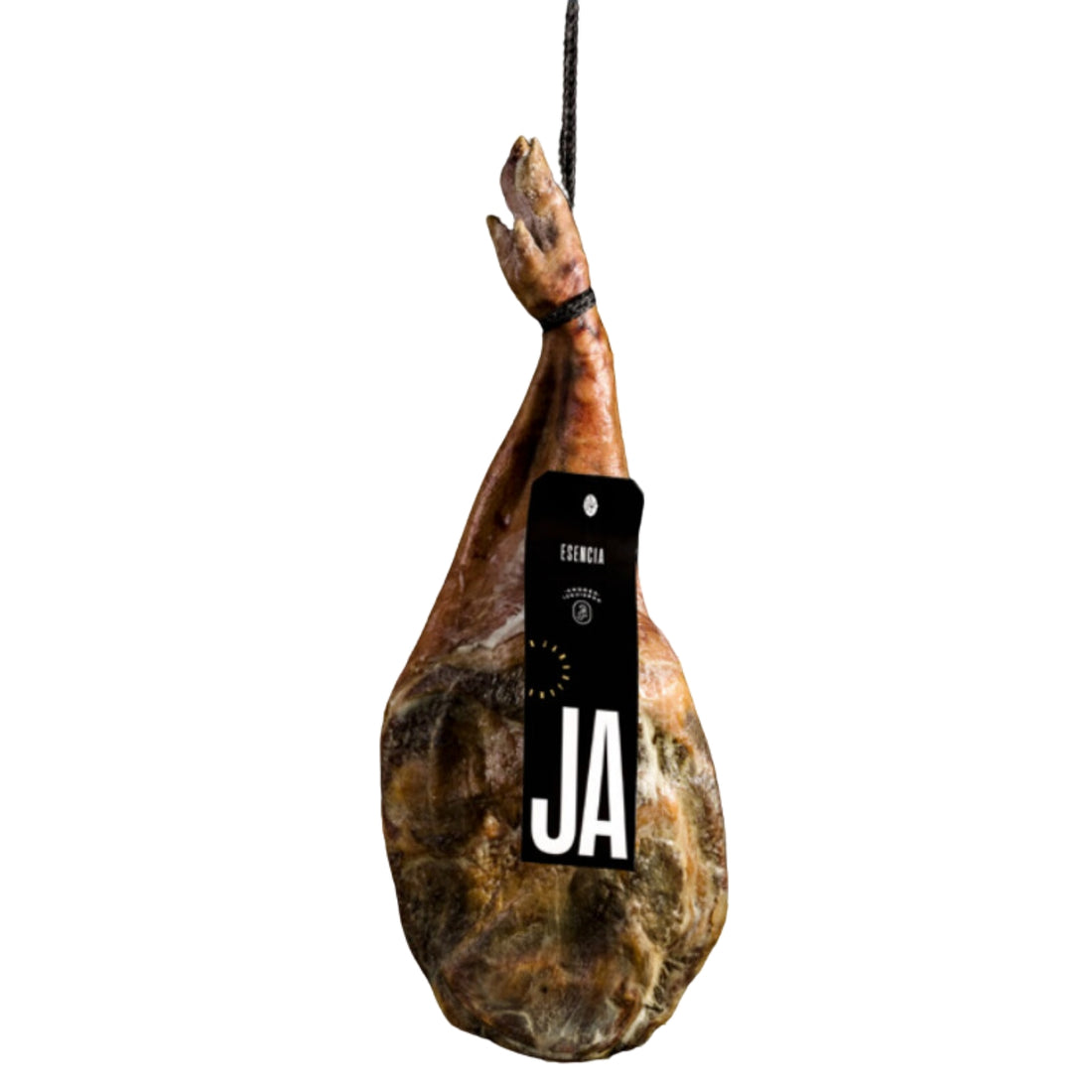
 Spanish ham Jamon Duroc in gift boxVendor:Spanish ham Jamon Duroc in gift boxAndres Izquierdo
Spanish ham Jamon Duroc in gift boxVendor:Spanish ham Jamon Duroc in gift boxAndres Izquierdo- Regular price
-
From
€72,50 - Regular price
-
€75,00 - Sale price
-
From
€72,50 - Unit price
-
€17,06 per kg
Quick view
-

 Iberico ham Jamon Iberico Hand cut (100g) | Cebo de Campo & CeboVendor:Iberico ham Jamon Iberico Hand cut (100g) | Cebo de Campo & CeboIbéricos Guillén
Iberico ham Jamon Iberico Hand cut (100g) | Cebo de Campo & CeboVendor:Iberico ham Jamon Iberico Hand cut (100g) | Cebo de Campo & CeboIbéricos Guillén- Regular price
-
From
€14,00 - Regular price
-
€15,50 - Sale price
-
From
€14,00 - Unit price
-
€140,00 per kg
Quick view
-

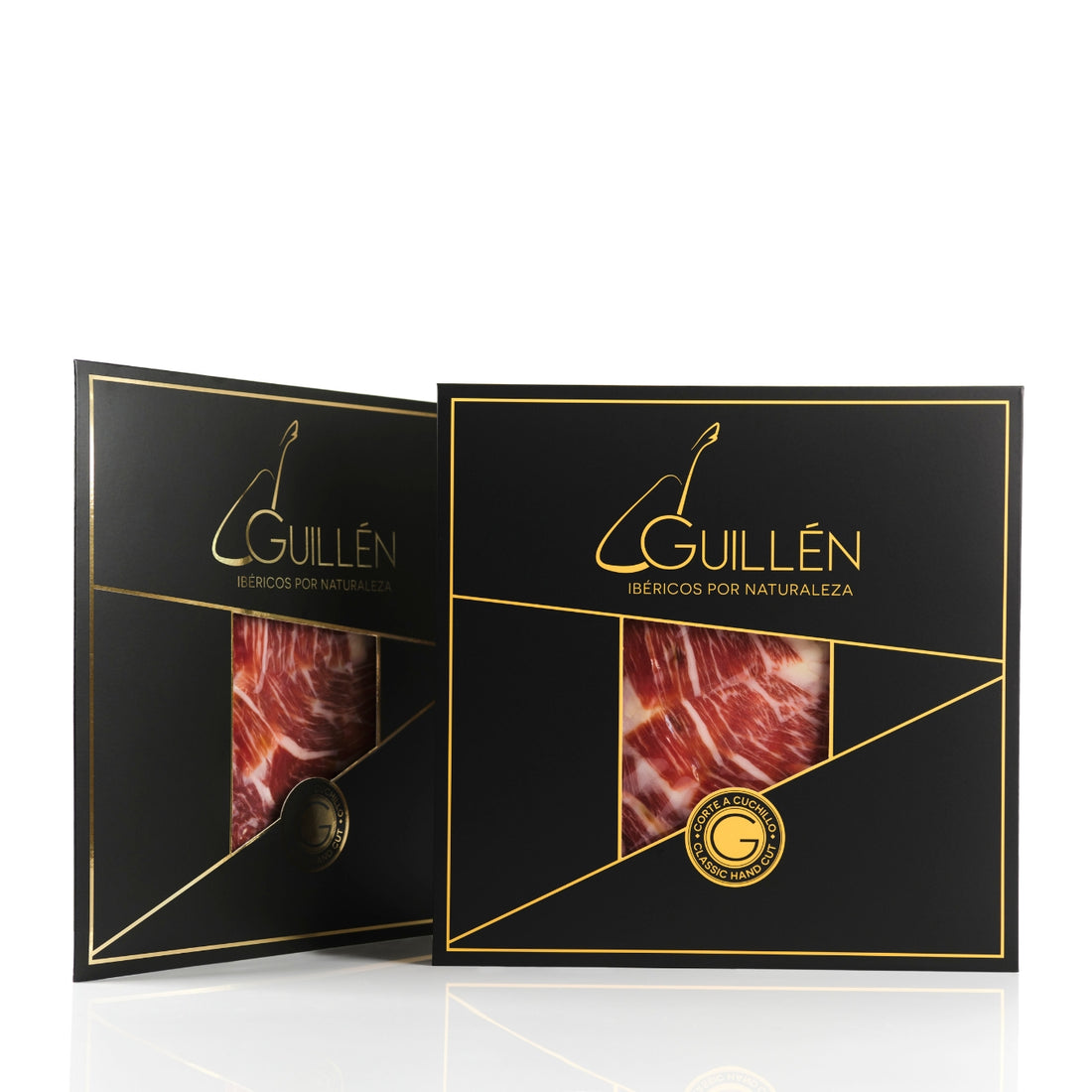 Pata Negra Jamon Bellota 100% Iberico 70gr hand cutVendor:Pata Negra Jamon Bellota 100% Iberico 70gr hand cutIbéricos Guillén
Pata Negra Jamon Bellota 100% Iberico 70gr hand cutVendor:Pata Negra Jamon Bellota 100% Iberico 70gr hand cutIbéricos Guillén- Regular price
-
From
€21,00 - Regular price
-
€105,00 - Sale price
-
From
€21,00 - Unit price
-
€300,00 per kg
Quick view
-

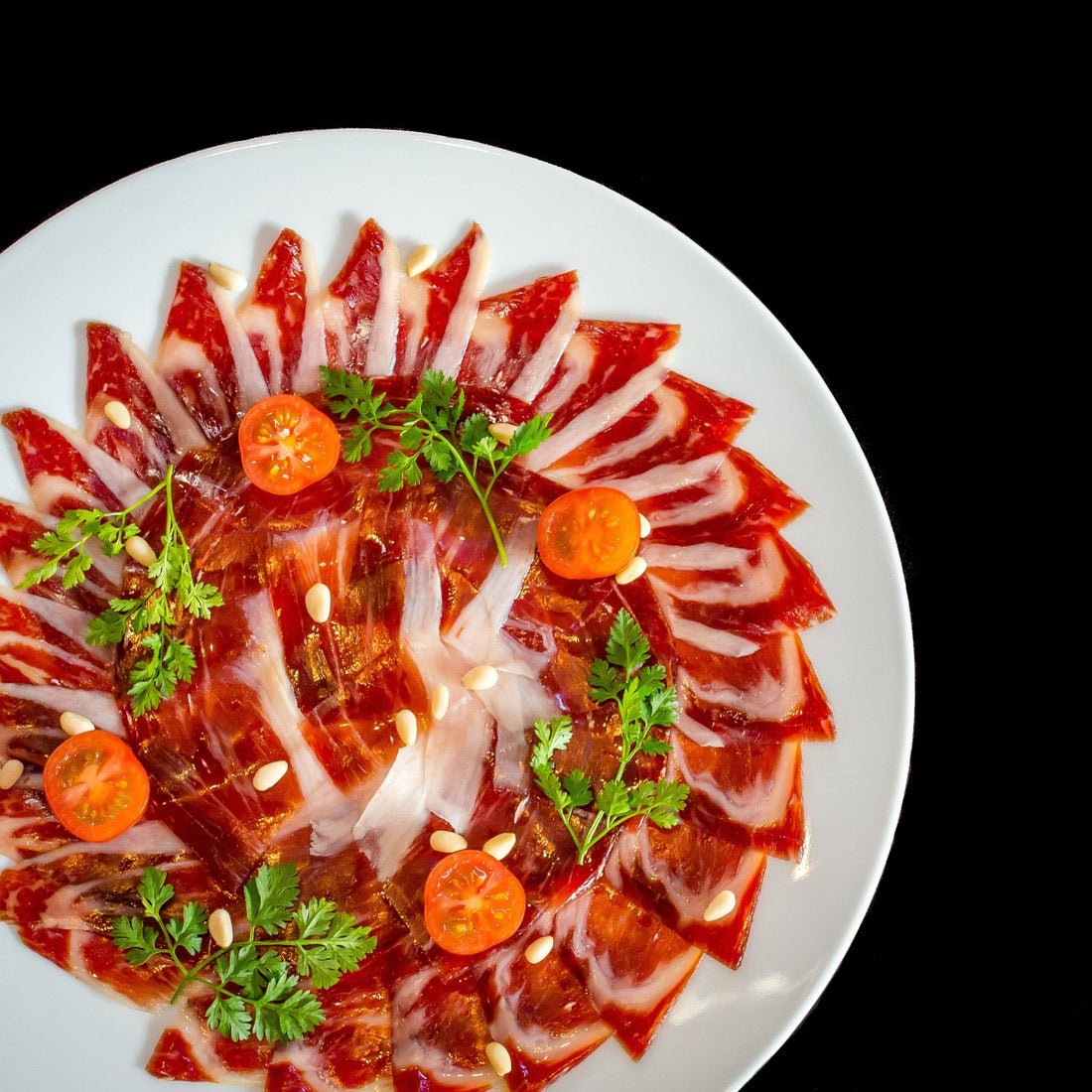 Handgesneden Iberico schouderham - Luxe verpakkingVendor:Handgesneden Iberico schouderham - Luxe verpakkingIbéricos Guillén
Handgesneden Iberico schouderham - Luxe verpakkingVendor:Handgesneden Iberico schouderham - Luxe verpakkingIbéricos Guillén- Regular price
-
€12,50 €175,00 - Regular price
-
- Sale price
-
€12,50 €175,00 - Unit price
-
€140,00 per kg
Quick view
-

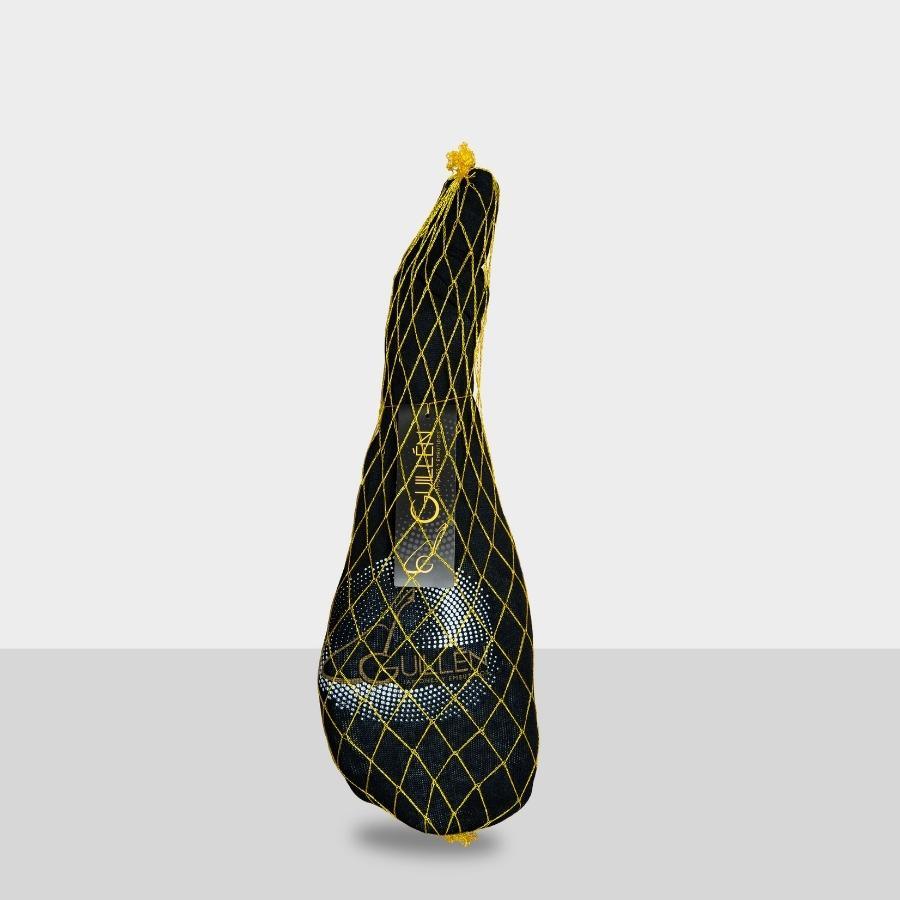 Pata Negra Paleta Bellota 100% Iberico | Iberico shoulder ham, acorn-fed, free-range, approx. 5 kgVendor:Pata Negra Paleta Bellota 100% Iberico | Iberico shoulder ham, acorn-fed, free-range, approx. 5 kgIbéricos Guillén
Pata Negra Paleta Bellota 100% Iberico | Iberico shoulder ham, acorn-fed, free-range, approx. 5 kgVendor:Pata Negra Paleta Bellota 100% Iberico | Iberico shoulder ham, acorn-fed, free-range, approx. 5 kgIbéricos Guillén- Regular price
-
€180,00 €270,00 - Regular price
-
- Sale price
-
€180,00 €270,00 - Unit price
-
€45,00 per kg
Quick view
-
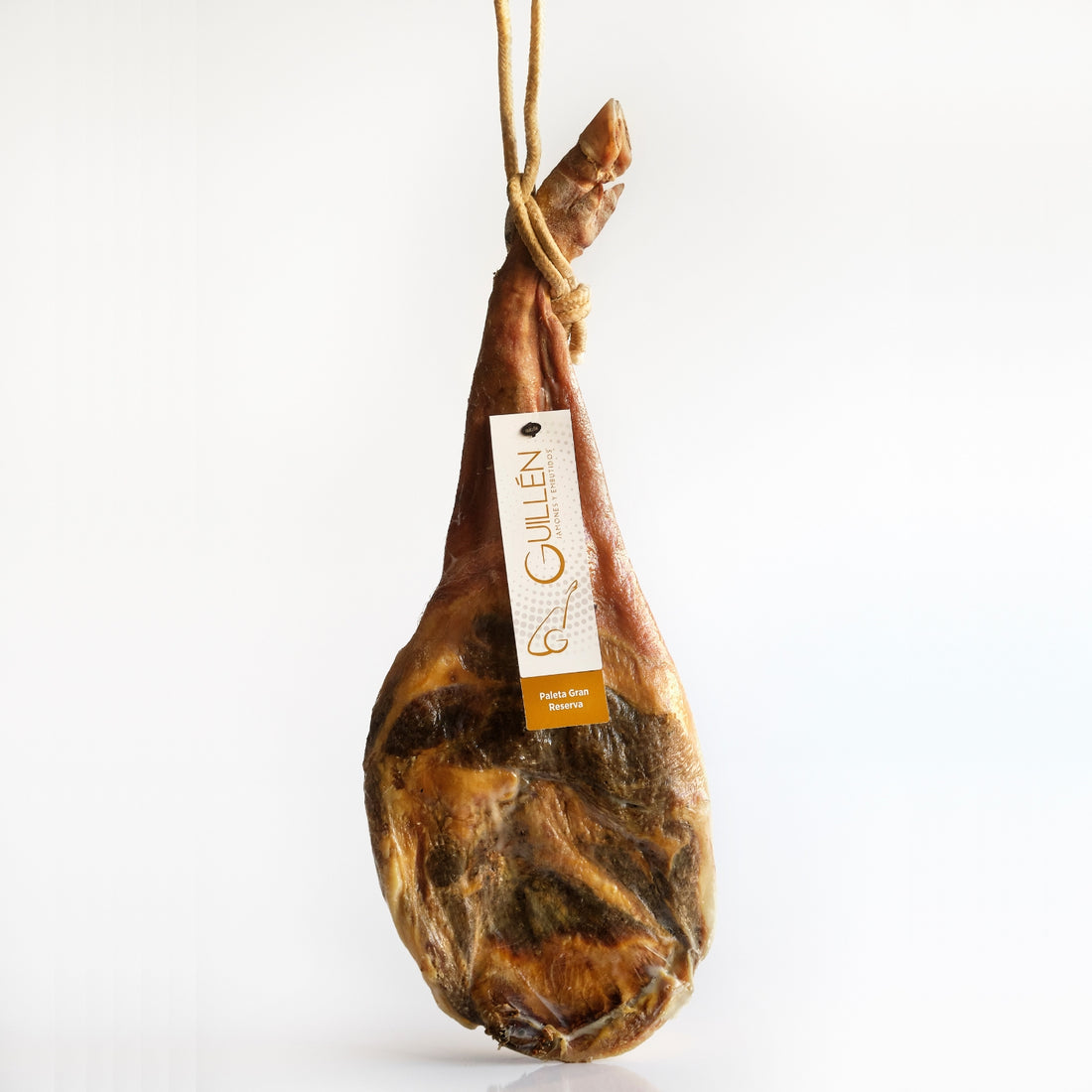
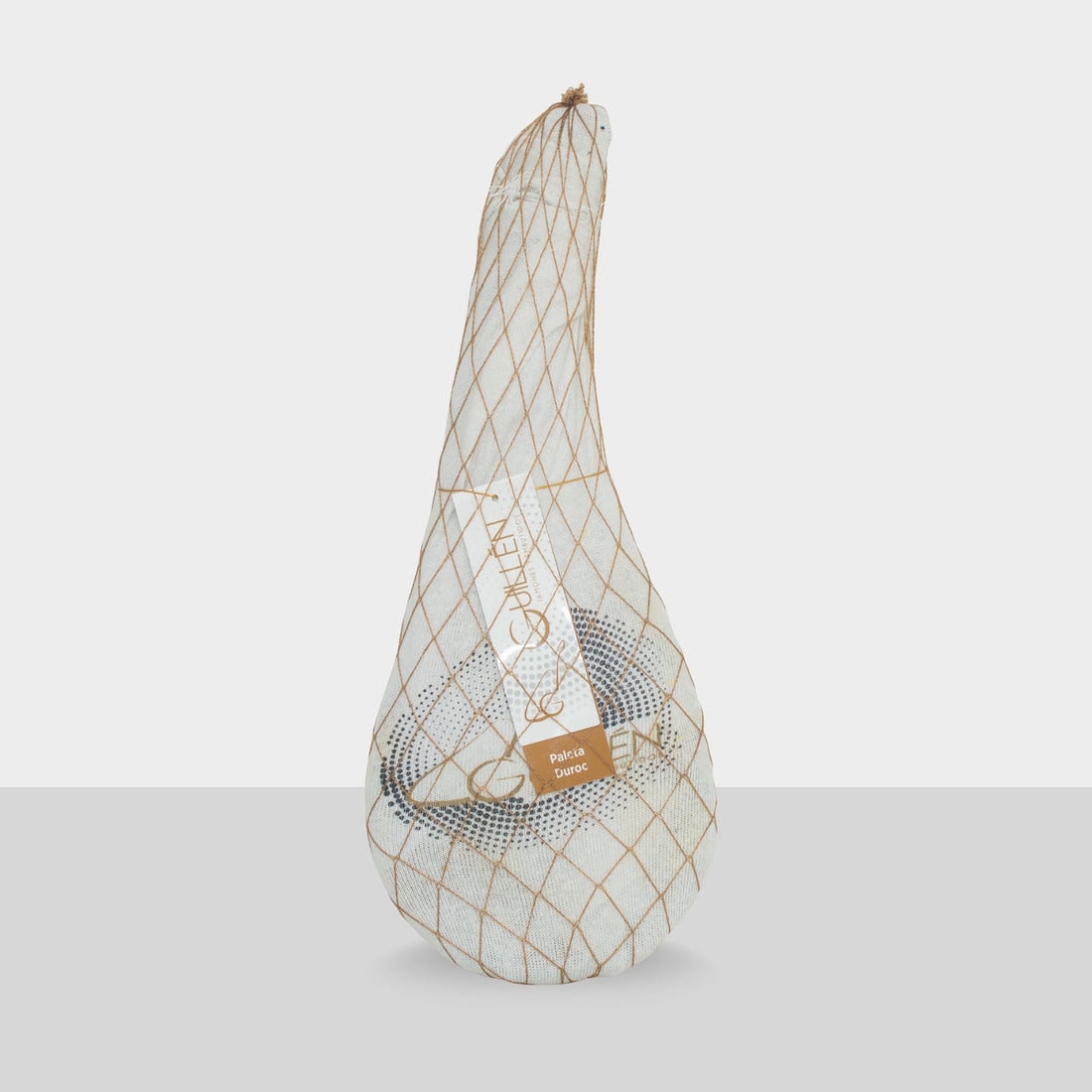 Spanish Duroc Ham Gran Reserva | Minimum 18 months matured approx. 5 kgVendor:Spanish Duroc Ham Gran Reserva | Minimum 18 months matured approx. 5 kgIbéricos Guillén
Spanish Duroc Ham Gran Reserva | Minimum 18 months matured approx. 5 kgVendor:Spanish Duroc Ham Gran Reserva | Minimum 18 months matured approx. 5 kgIbéricos Guillén- Regular price
-
€78,75 €105,00 - Regular price
-
- Sale price
-
€78,75 €105,00
Quick view
-
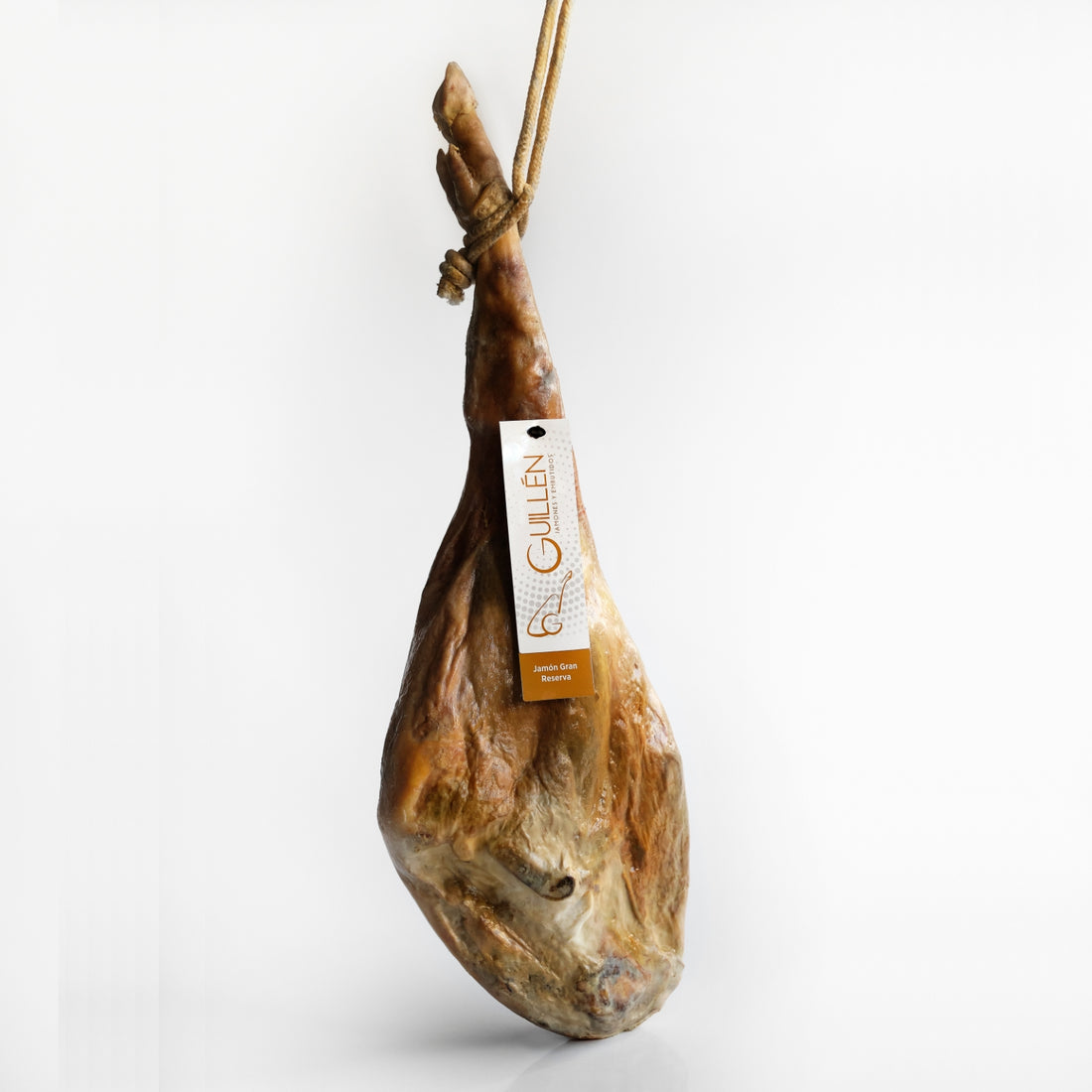
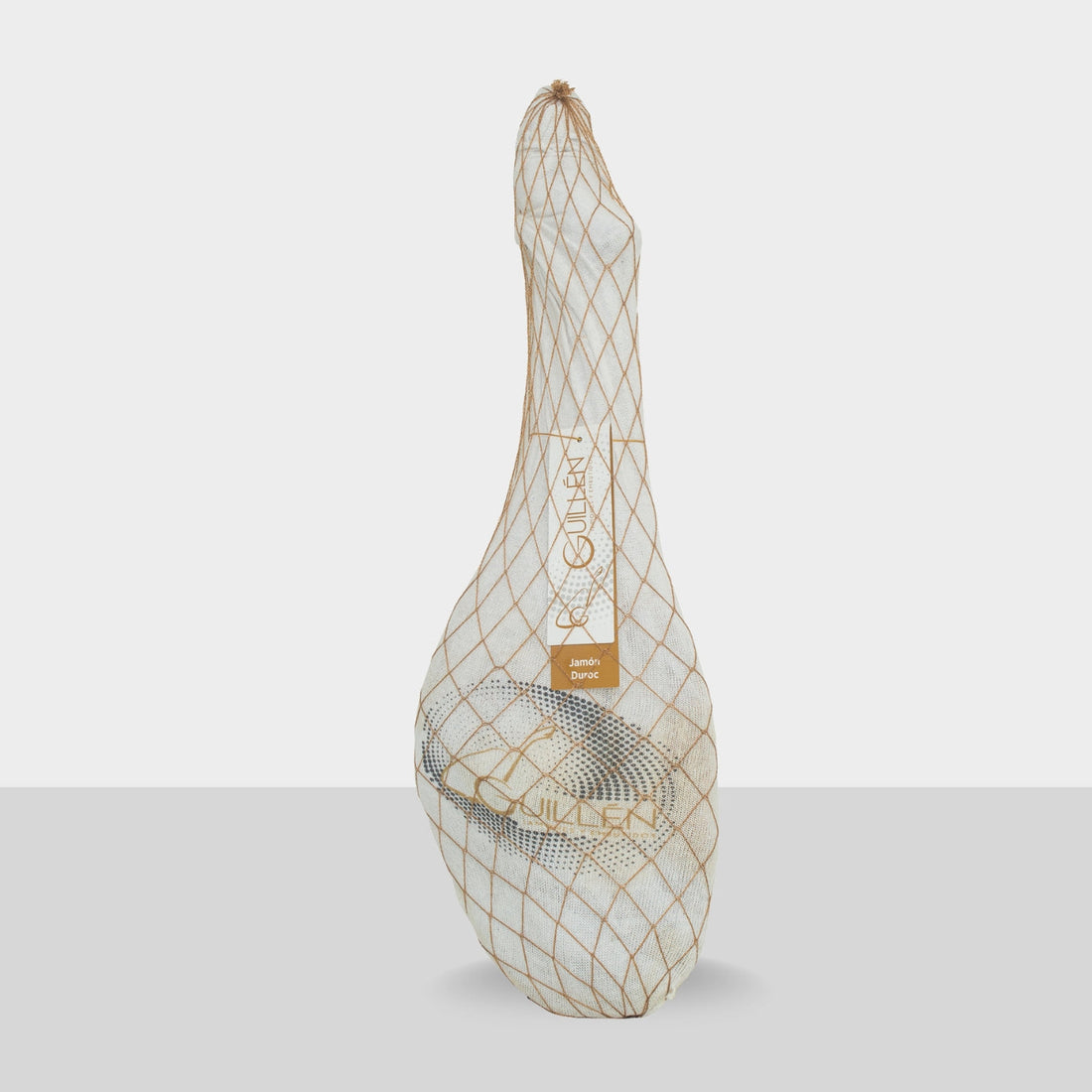 Jamon Duroc Gran Reserva Spanish hamVendor:Jamon Duroc Gran Reserva Spanish hamIbéricos Guillén
Jamon Duroc Gran Reserva Spanish hamVendor:Jamon Duroc Gran Reserva Spanish hamIbéricos Guillén- Regular price
-
From
€150,00 - Regular price
-
€185,00 - Sale price
-
From
€150,00 - Unit price
-
€20,63 per kg
Quick view
-
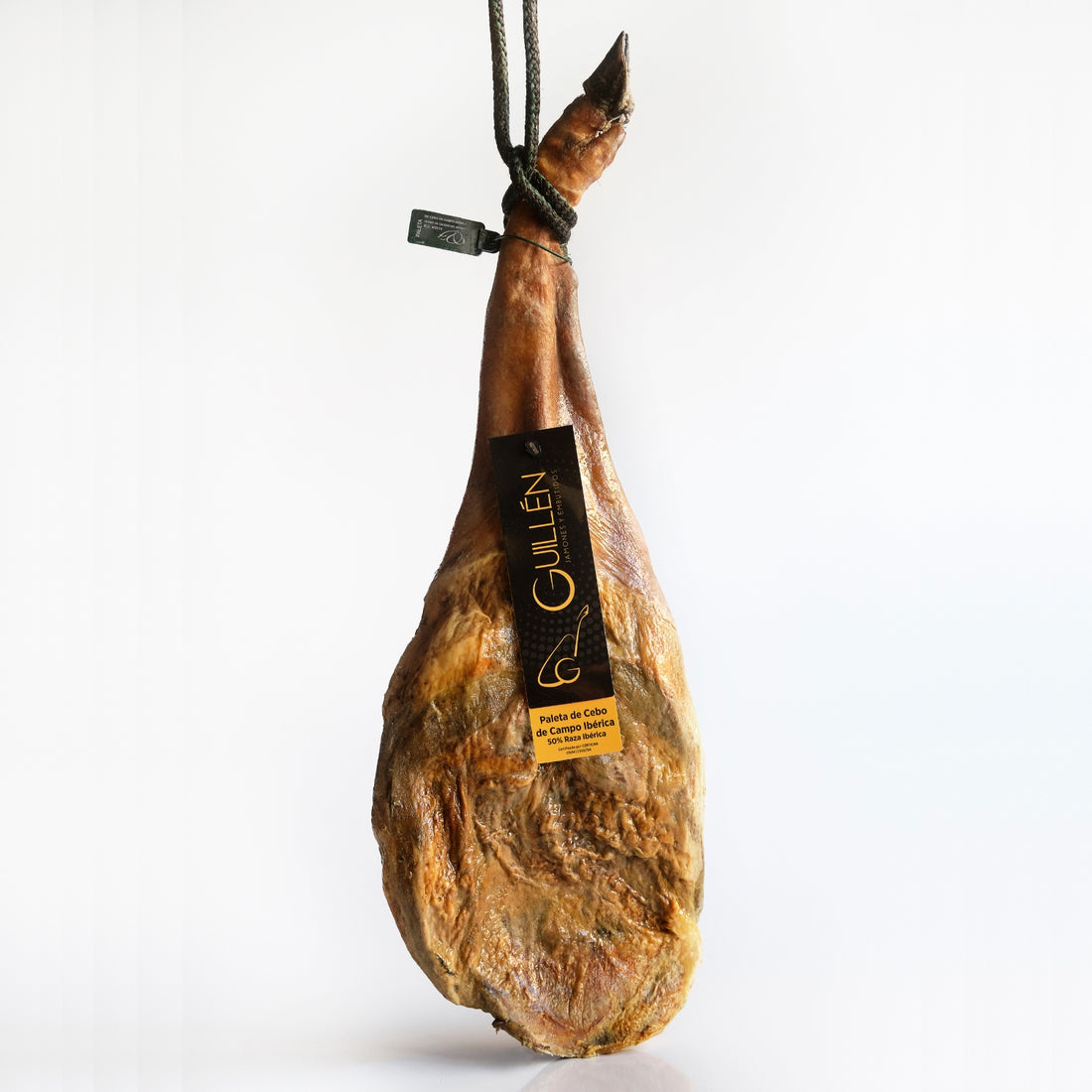
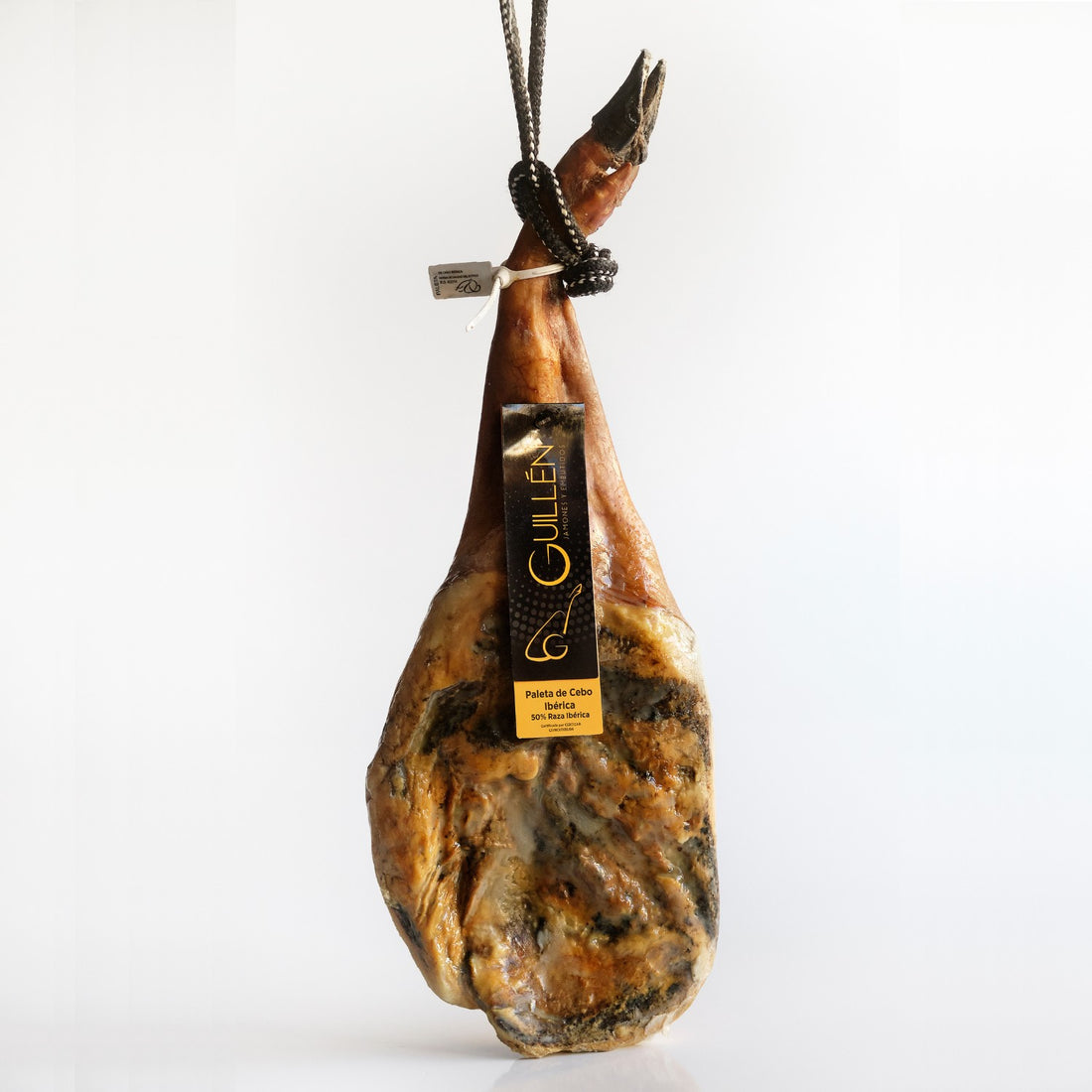 Paleta Iberico Cebo de Campo | Iberico shoulder ham - grass-fed, free range approx. 5 kgVendor:Paleta Iberico Cebo de Campo | Iberico shoulder ham - grass-fed, free range approx. 5 kgIbéricos Guillén
Paleta Iberico Cebo de Campo | Iberico shoulder ham - grass-fed, free range approx. 5 kgVendor:Paleta Iberico Cebo de Campo | Iberico shoulder ham - grass-fed, free range approx. 5 kgIbéricos Guillén- Regular price
-
From
€126,00 - Regular price
-
€247,50 - Sale price
-
From
€126,00 - Unit price
-
€28,00 per kg
Quick view
-
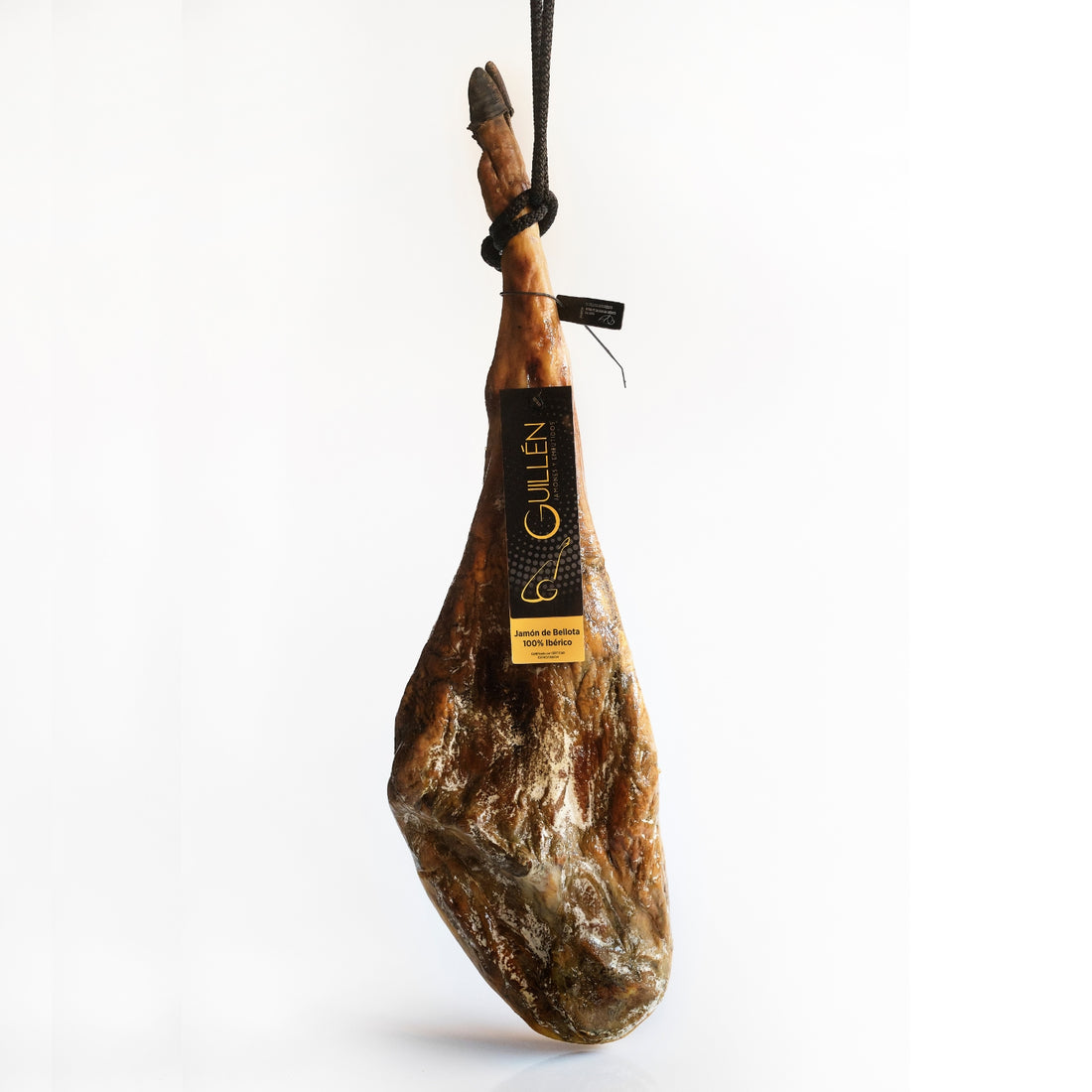
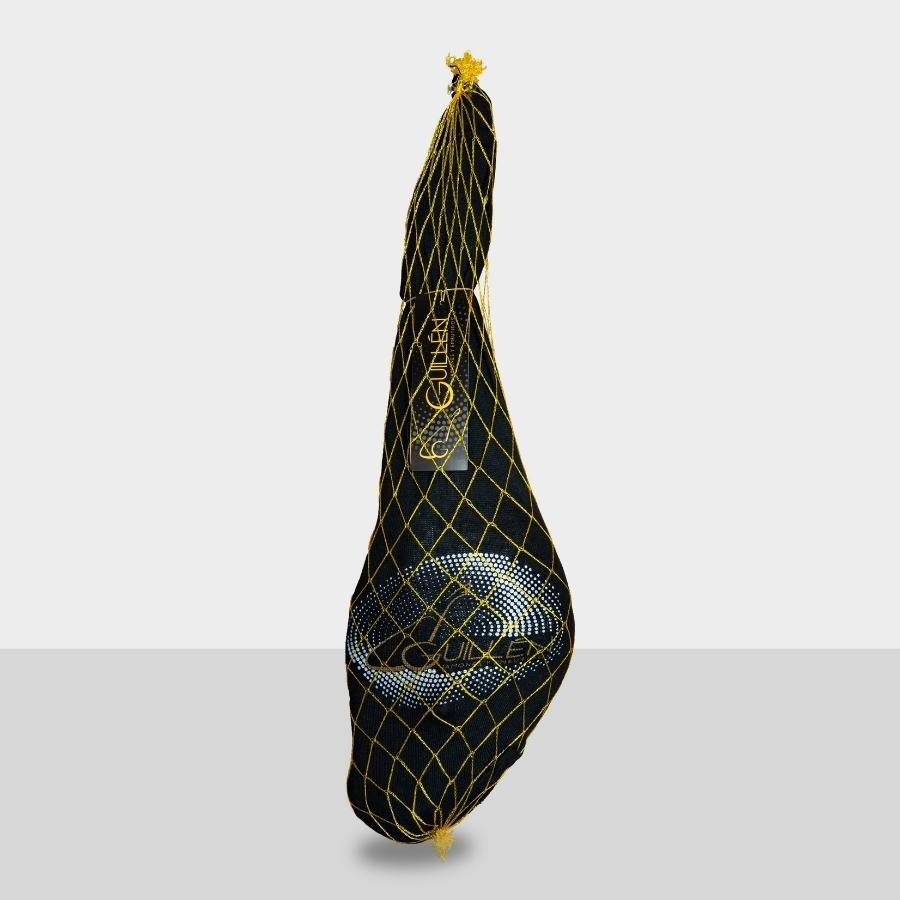 Pata Negra Jamon Bellota 100% Iberico | Iberico ham acorn-fed, free-range ham approx. 8 kgVendor:Pata Negra Jamon Bellota 100% Iberico | Iberico ham acorn-fed, free-range ham approx. 8 kgIbéricos Guillén
Pata Negra Jamon Bellota 100% Iberico | Iberico ham acorn-fed, free-range ham approx. 8 kgVendor:Pata Negra Jamon Bellota 100% Iberico | Iberico ham acorn-fed, free-range ham approx. 8 kgIbéricos Guillén- Regular price
-
€455,00 €552,50 - Regular price
-
€550,00 - Sale price
-
€455,00 €552,50
Quick view
-
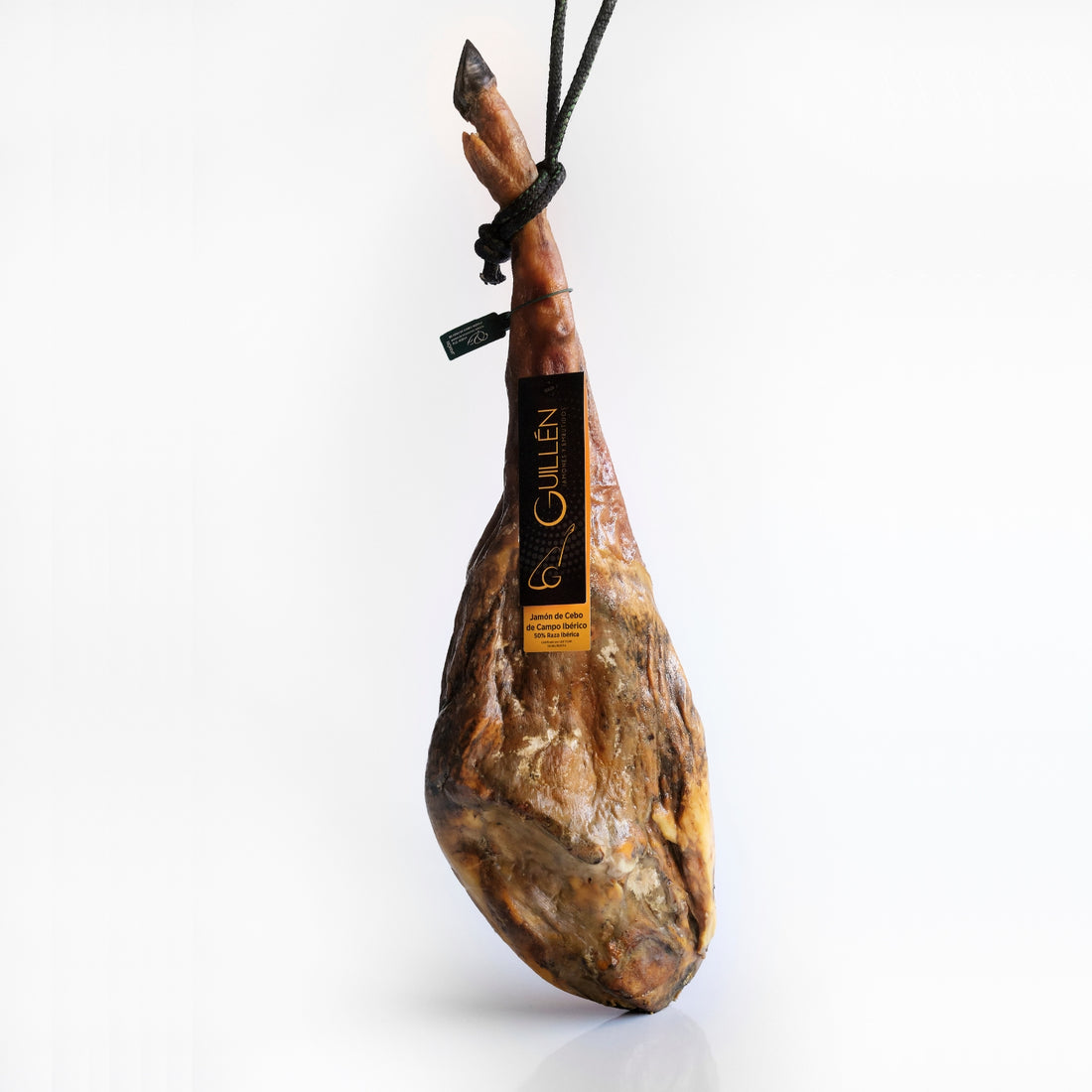
 Jamon Cebo de Campo Iberico | Iberico ham grass-fed free range 7-9 kgVendor:Jamon Cebo de Campo Iberico | Iberico ham grass-fed free range 7-9 kgIbéricos Guillén
Jamon Cebo de Campo Iberico | Iberico ham grass-fed free range 7-9 kgVendor:Jamon Cebo de Campo Iberico | Iberico ham grass-fed free range 7-9 kgIbéricos Guillén- Regular price
-
From
€225,00 - Regular price
-
€240,00 - Sale price
-
From
€225,00 - Unit price
-
€30,00 per kg
Quick view
-
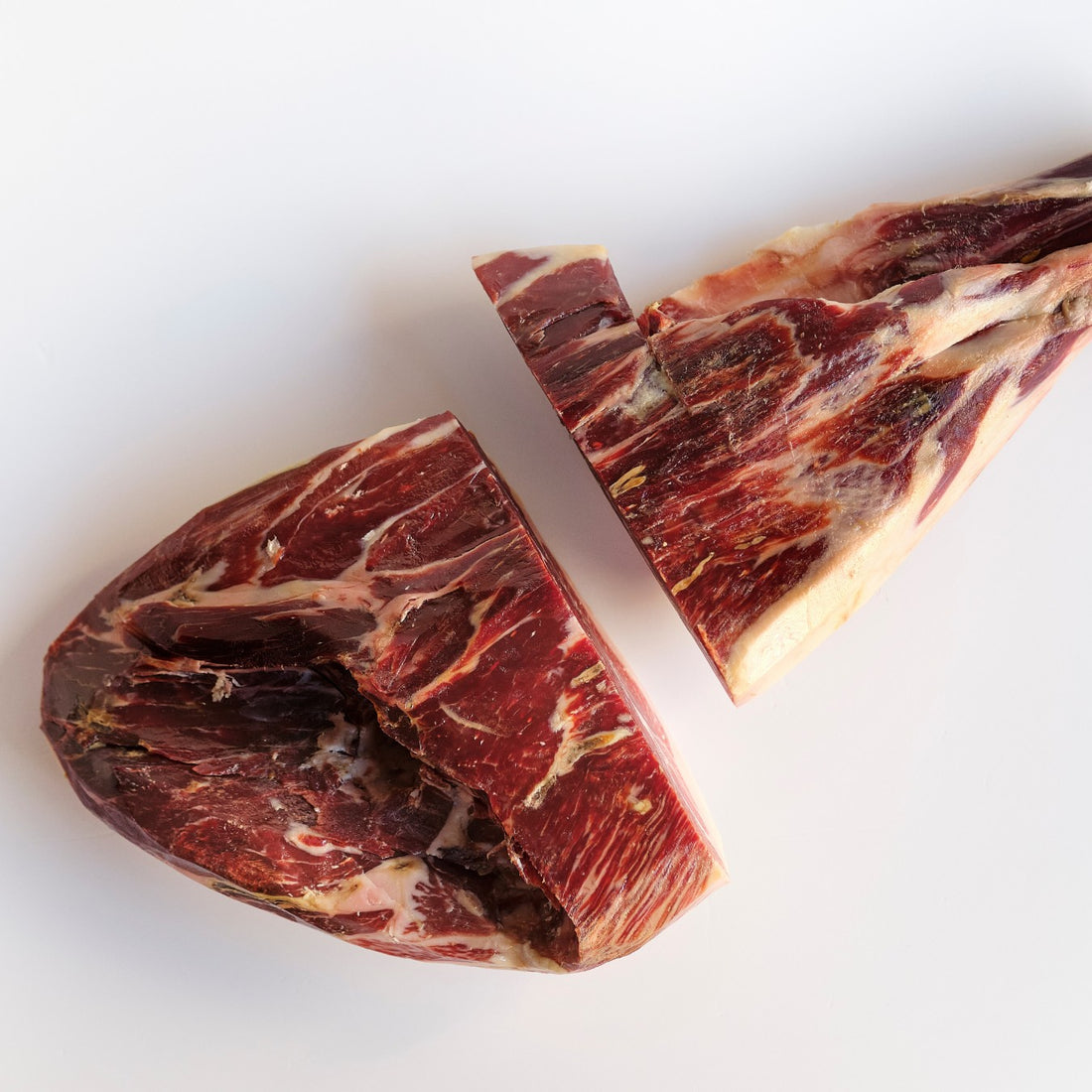
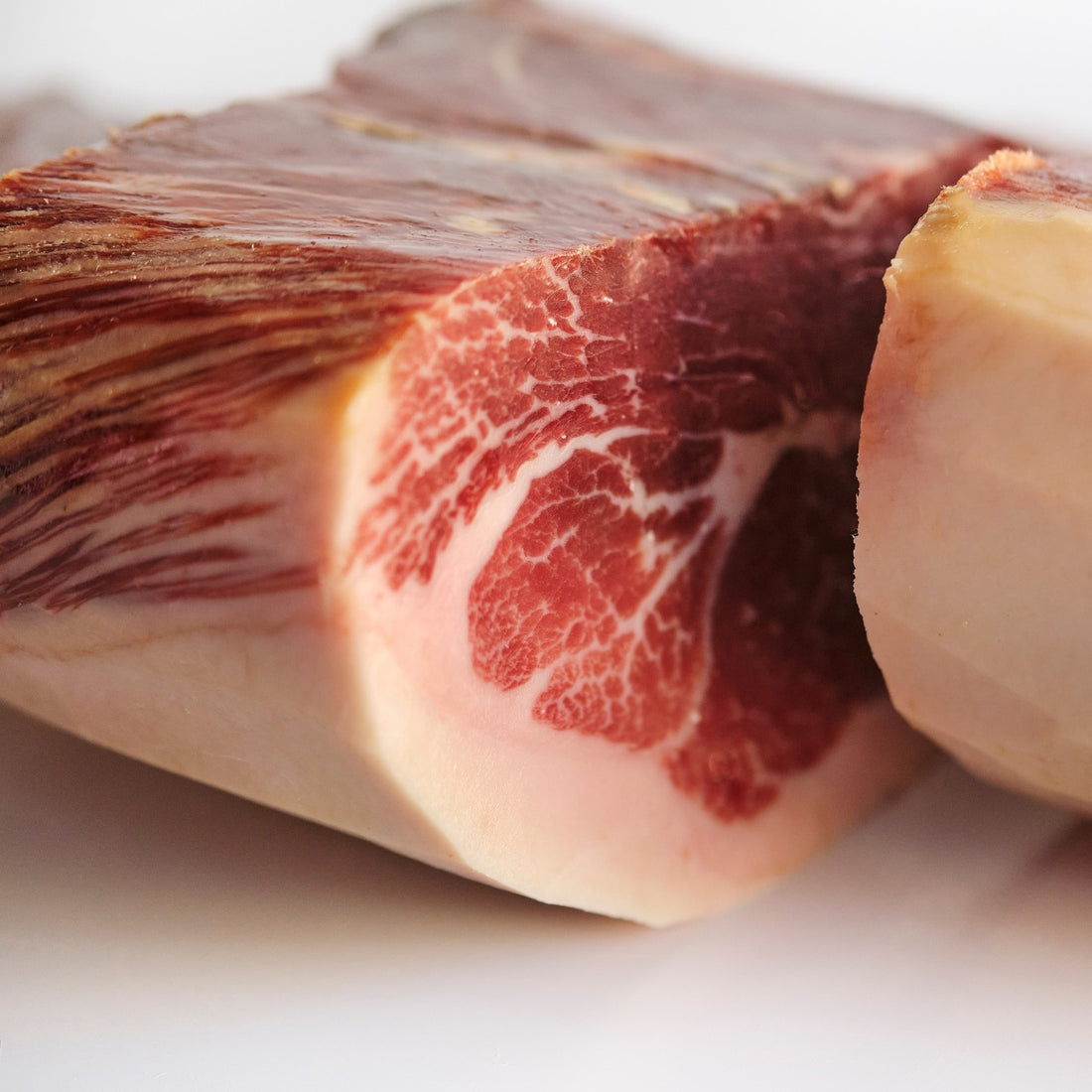 Jamon Iberico Cebo de Campo (Boneless various sizes) | Grass-fed & Free RangeVendor:Jamon Iberico Cebo de Campo (Boneless various sizes) | Grass-fed & Free RangeIbéricos Guillén
Jamon Iberico Cebo de Campo (Boneless various sizes) | Grass-fed & Free RangeVendor:Jamon Iberico Cebo de Campo (Boneless various sizes) | Grass-fed & Free RangeIbéricos Guillén- Regular price
-
€49,40 €224,75 - Regular price
-
- Sale price
-
€49,40 €224,75 - Unit price
-
€76,00 per kg
Quick view
-
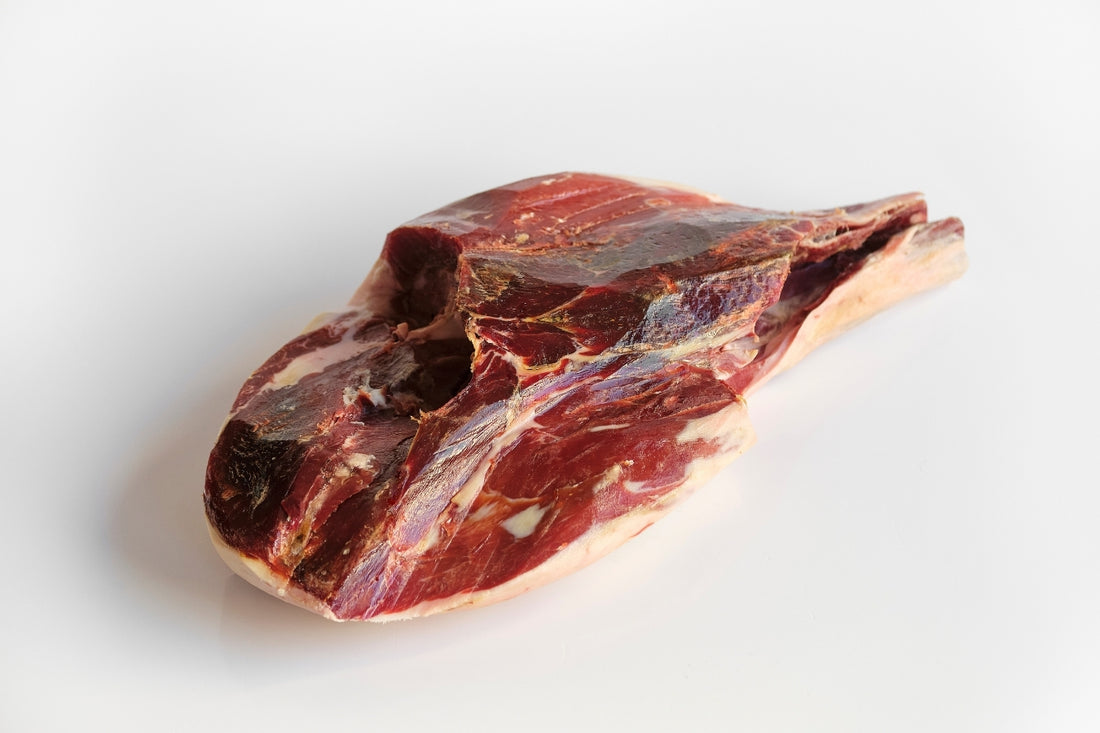 Jamon Duroc Gran Reserva Spanish hamVendor:Jamon Duroc Gran Reserva Spanish hamIbéricos Guillén
Jamon Duroc Gran Reserva Spanish hamVendor:Jamon Duroc Gran Reserva Spanish hamIbéricos Guillén- Regular price
-
€22,00 €74,00 - Regular price
-
- Sale price
-
€22,00 €74,00 - Unit price
-
€40,00 per kg
Quick view
-
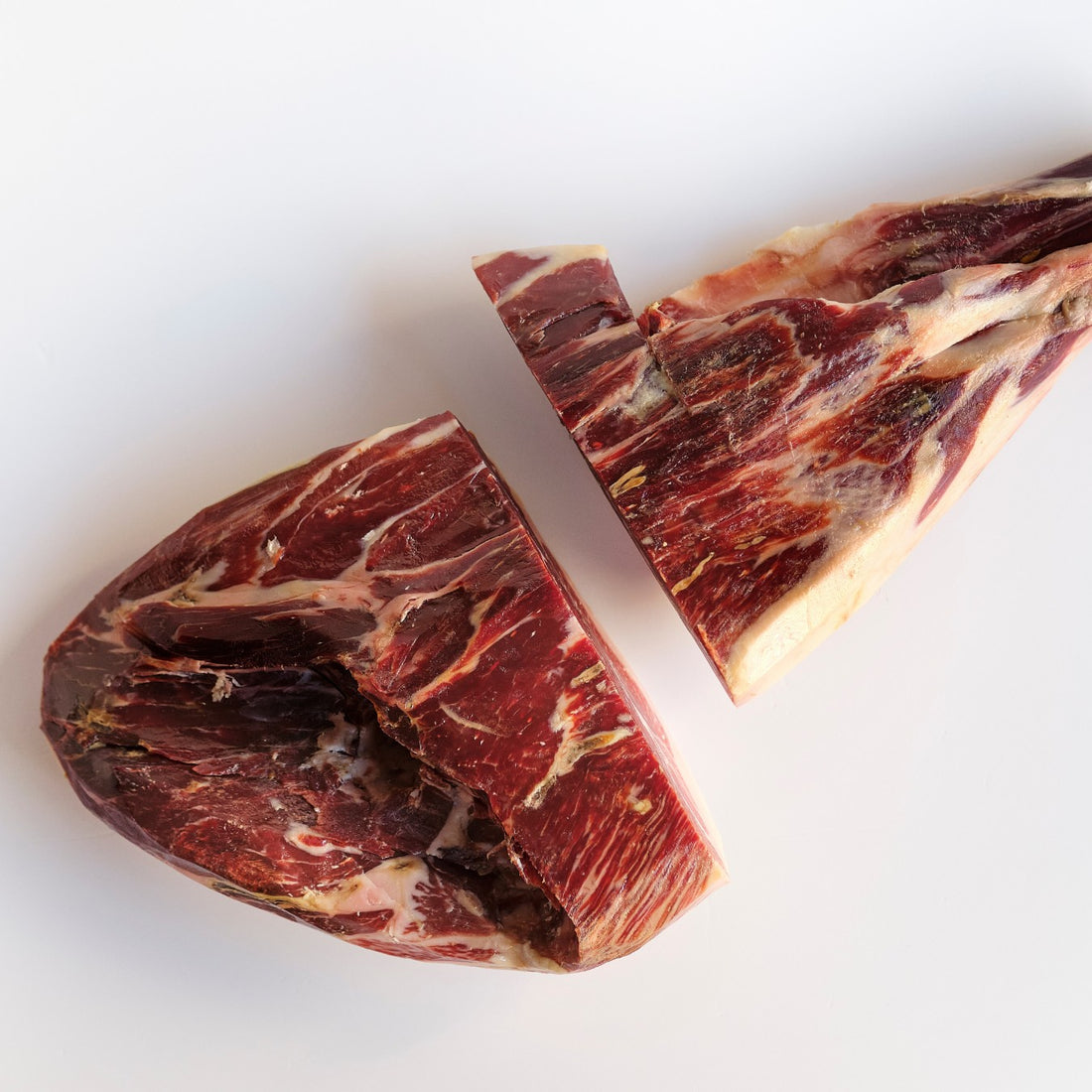
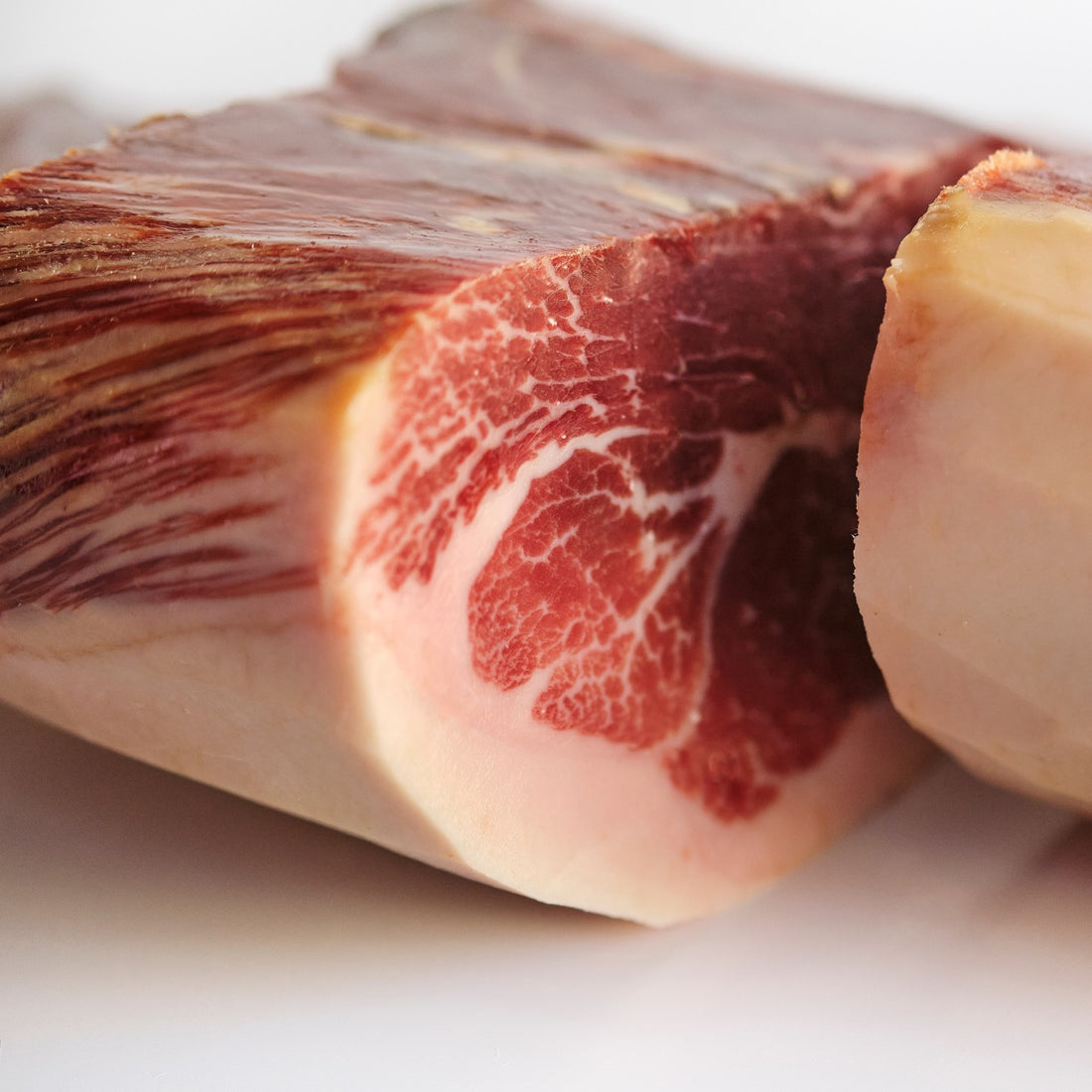 Pata Negra Jamon Bellota 100% Iberico | Deboned Iberico ham, acorn-fed, free-rangeVendor:Pata Negra Jamon Bellota 100% Iberico | Deboned Iberico ham, acorn-fed, free-rangeIbéricos Guillén
Pata Negra Jamon Bellota 100% Iberico | Deboned Iberico ham, acorn-fed, free-rangeVendor:Pata Negra Jamon Bellota 100% Iberico | Deboned Iberico ham, acorn-fed, free-rangeIbéricos Guillén- Regular price
-
€85,25 €519,25 - Regular price
-
- Sale price
-
€85,25 €519,25 - Unit price
-
€155,00 per kg
Quick view
-
 Jamon Duroc Andres Iqzuierdo Spanish ham 100 gr.Vendor:Jamon Duroc Andres Iqzuierdo Spanish ham 100 gr.Andres Izquierdo
Jamon Duroc Andres Iqzuierdo Spanish ham 100 gr.Vendor:Jamon Duroc Andres Iqzuierdo Spanish ham 100 gr.Andres Izquierdo- Regular price
-
€8,50 - Regular price
-
- Sale price
-
€8,50
Quick view
-

 Jamon de Teruel Liberno DOP Spanish ham 100 gr.Vendor:Jamon de Teruel Liberno DOP Spanish ham 100 gr.Andres Izquierdo
Jamon de Teruel Liberno DOP Spanish ham 100 gr.Vendor:Jamon de Teruel Liberno DOP Spanish ham 100 gr.Andres Izquierdo- Regular price
-
€8,50 - Regular price
-
- Sale price
-
€8,50
Quick view
-
 Jamon de Autor JA Premium Spanish ham 100 gr.Vendor:Jamon de Autor JA Premium Spanish ham 100 gr.Andres Izquierdo
Jamon de Autor JA Premium Spanish ham 100 gr.Vendor:Jamon de Autor JA Premium Spanish ham 100 gr.Andres Izquierdo- Regular price
-
€8,50 - Regular price
-
- Sale price
-
€8,50
Quick view
-

 Iberico ham Jamon Iberico slicedVendor:Iberico ham Jamon Iberico slicedIbéricos Guillén
Iberico ham Jamon Iberico slicedVendor:Iberico ham Jamon Iberico slicedIbéricos Guillén- Regular price
-
€6,50 €70,00 - Regular price
-
- Sale price
-
€6,50 €70,00 - Unit price
-
€65,00 per kg
Quick view
-
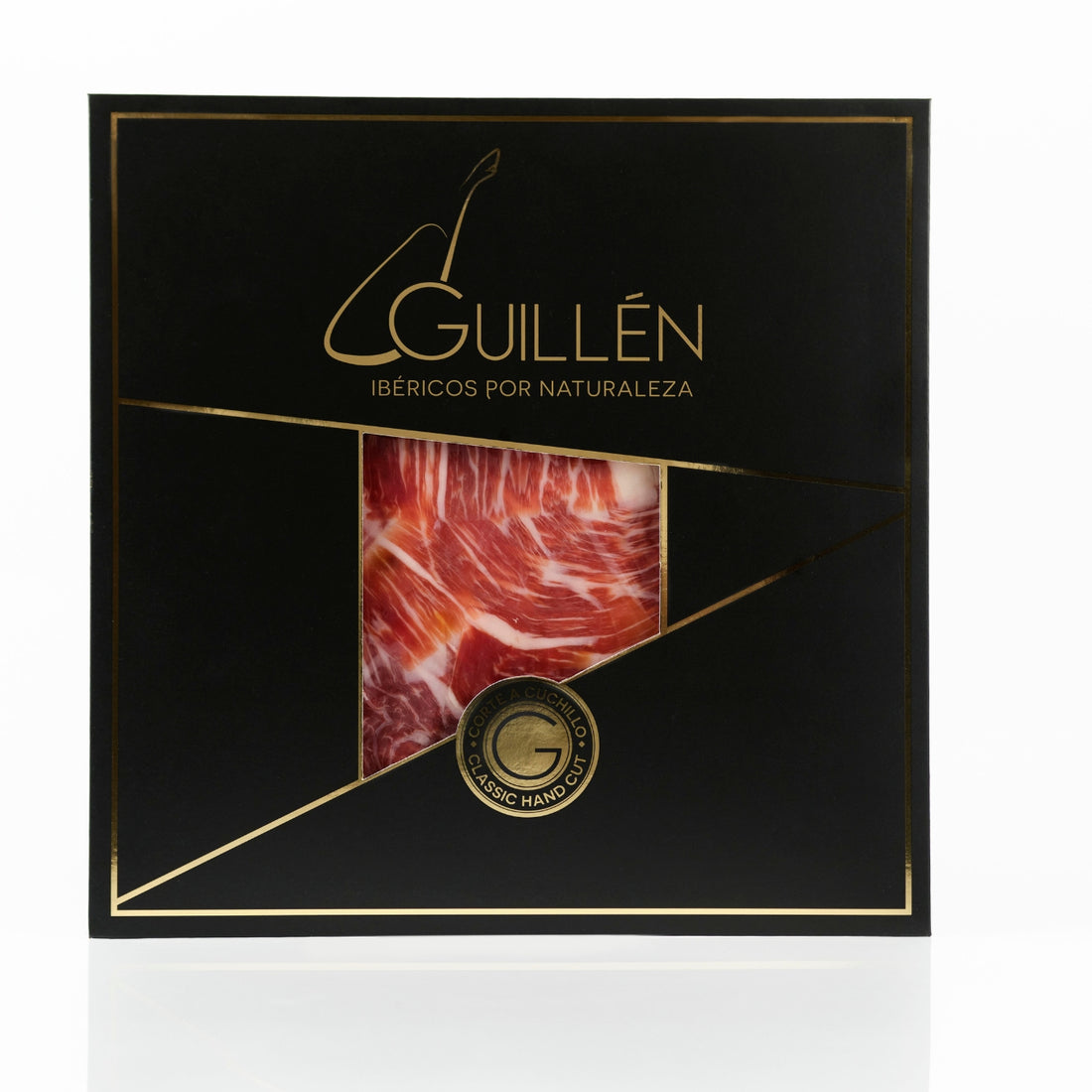
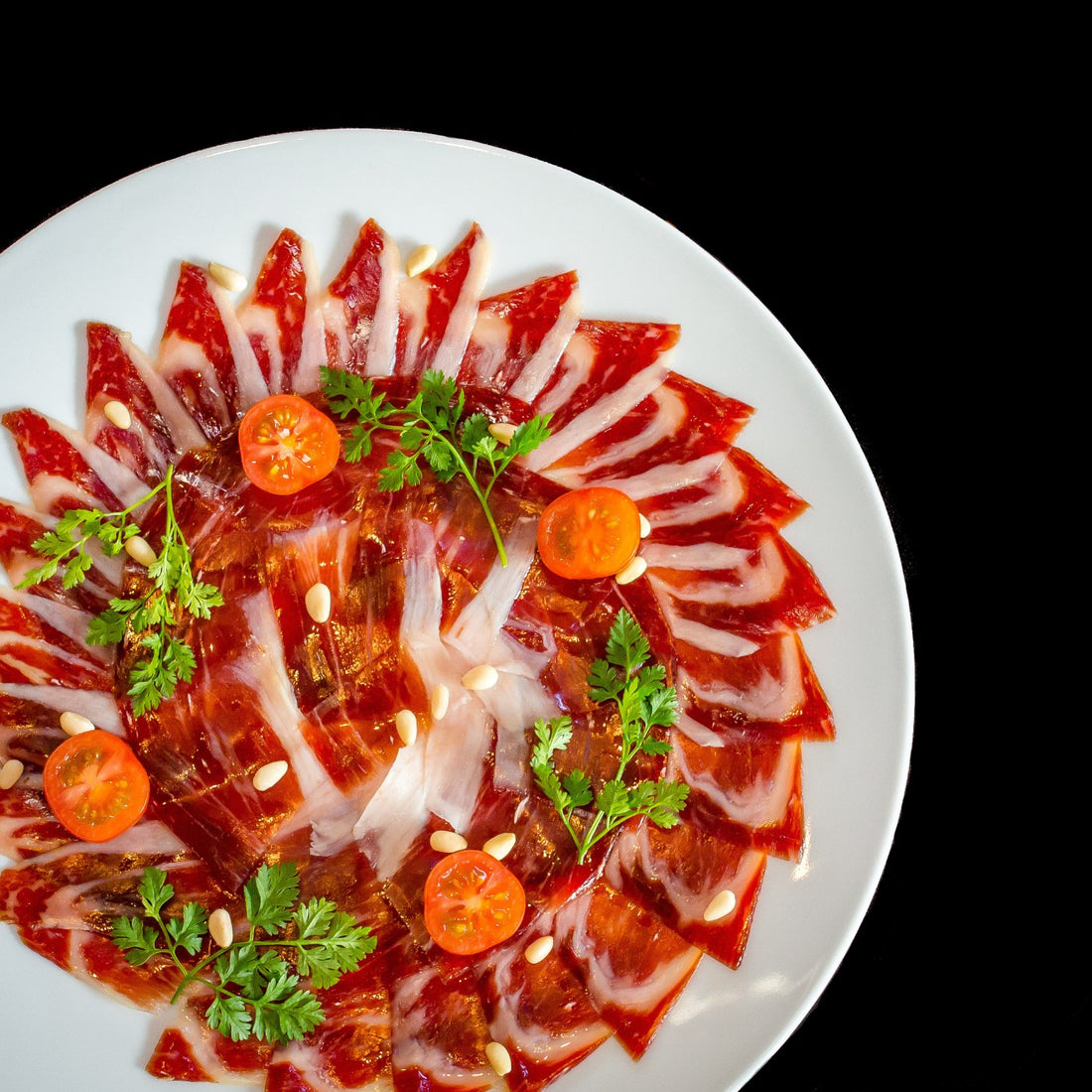 Paleta Bellota 100% Iberico schouderham (Pata Negra) 100gVendor:Paleta Bellota 100% Iberico schouderham (Pata Negra) 100gIbéricos Guillén
Paleta Bellota 100% Iberico schouderham (Pata Negra) 100gVendor:Paleta Bellota 100% Iberico schouderham (Pata Negra) 100gIbéricos Guillén- Regular price
-
€19,00 €175,00 - Regular price
-
- Sale price
-
€19,00 €175,00 - Unit price
-
€271,43 per kg
Quick view
-

 Spanish mini ham Duroc approx. 800 gramsVendor:Spanish mini ham Duroc approx. 800 gramsAndres Izquierdo
Spanish mini ham Duroc approx. 800 gramsVendor:Spanish mini ham Duroc approx. 800 gramsAndres Izquierdo- Regular price
-
€22,00 €35,50 - Regular price
-
- Sale price
-
€22,00 €35,50 - Unit price
-
€31,43 per kg
Quick view
-
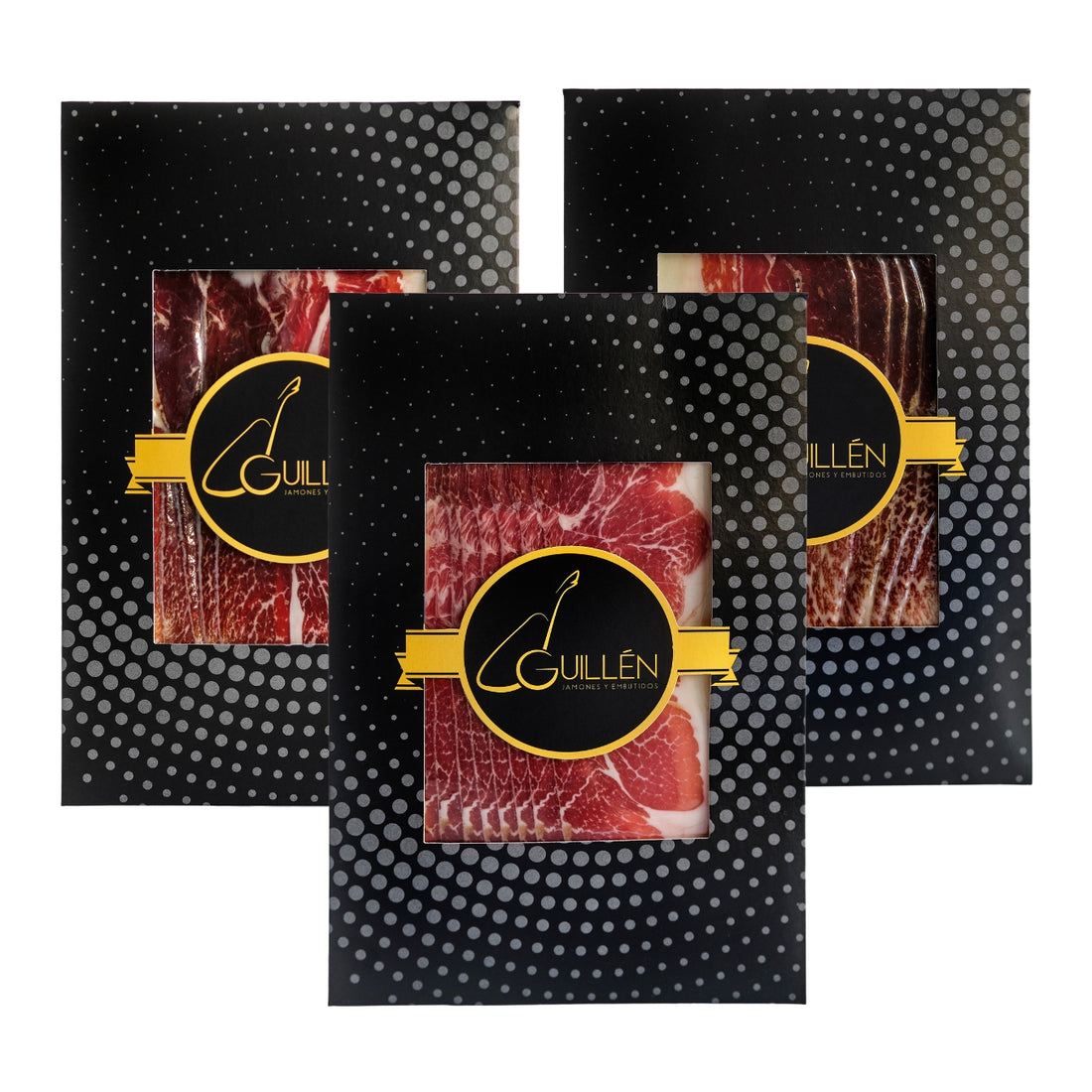 Iberico Ham Tasting – 3 Types Sliced (3 x 100g) | Bellota & CeboVendor:Iberico Ham Tasting – 3 Types Sliced (3 x 100g) | Bellota & CeboIbéricos Guillén
Iberico Ham Tasting – 3 Types Sliced (3 x 100g) | Bellota & CeboVendor:Iberico Ham Tasting – 3 Types Sliced (3 x 100g) | Bellota & CeboIbéricos Guillén- Regular price
-
€33,50 - Regular price
-
€35,00 - Sale price
-
€33,50
Quick view
-
 Iberico Bellota charcuterie tastingVendor:Iberico Bellota charcuterie tastingIbéricos Guillén
Iberico Bellota charcuterie tastingVendor:Iberico Bellota charcuterie tastingIbéricos Guillén- Regular price
-
€44,50 - Regular price
-
€45,90 - Sale price
-
€44,50
Quick view
-

 Iberico ham tasting - 3 types of Jamon Iberico hand-cutVendor:Iberico ham tasting - 3 types of Jamon Iberico hand-cutIbéricos Guillén
Iberico ham tasting - 3 types of Jamon Iberico hand-cutVendor:Iberico ham tasting - 3 types of Jamon Iberico hand-cutIbéricos Guillén- Regular price
-
€47,50 - Regular price
-
€50,50 - Sale price
-
€47,50
Quick view
-
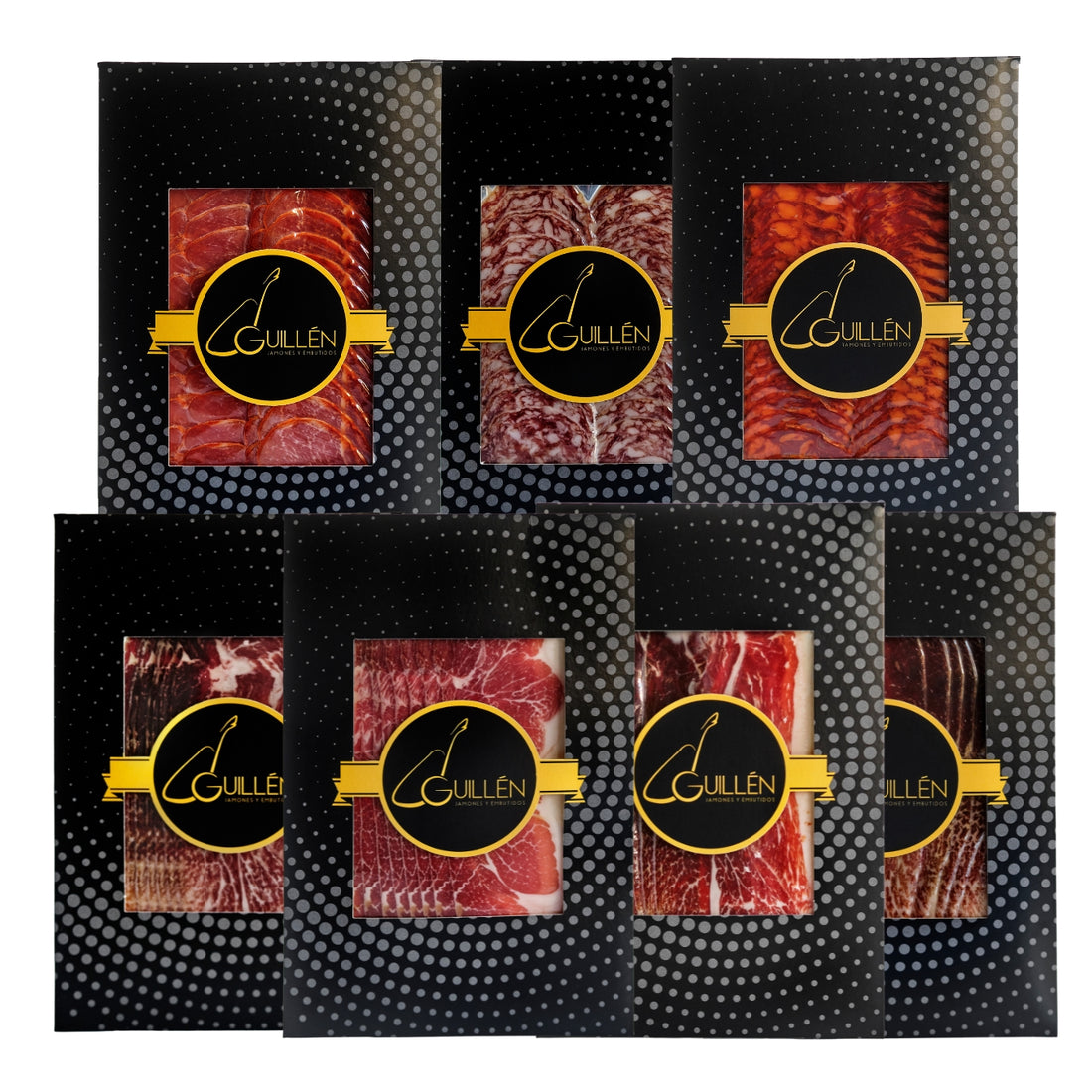 Iberico Completo tastingVendor:Iberico Completo tastingIbéricos Guillén
Iberico Completo tastingVendor:Iberico Completo tastingIbéricos Guillén- Regular price
-
€57,50 - Regular price
-
€59,50 - Sale price
-
€57,50
Quick view
-
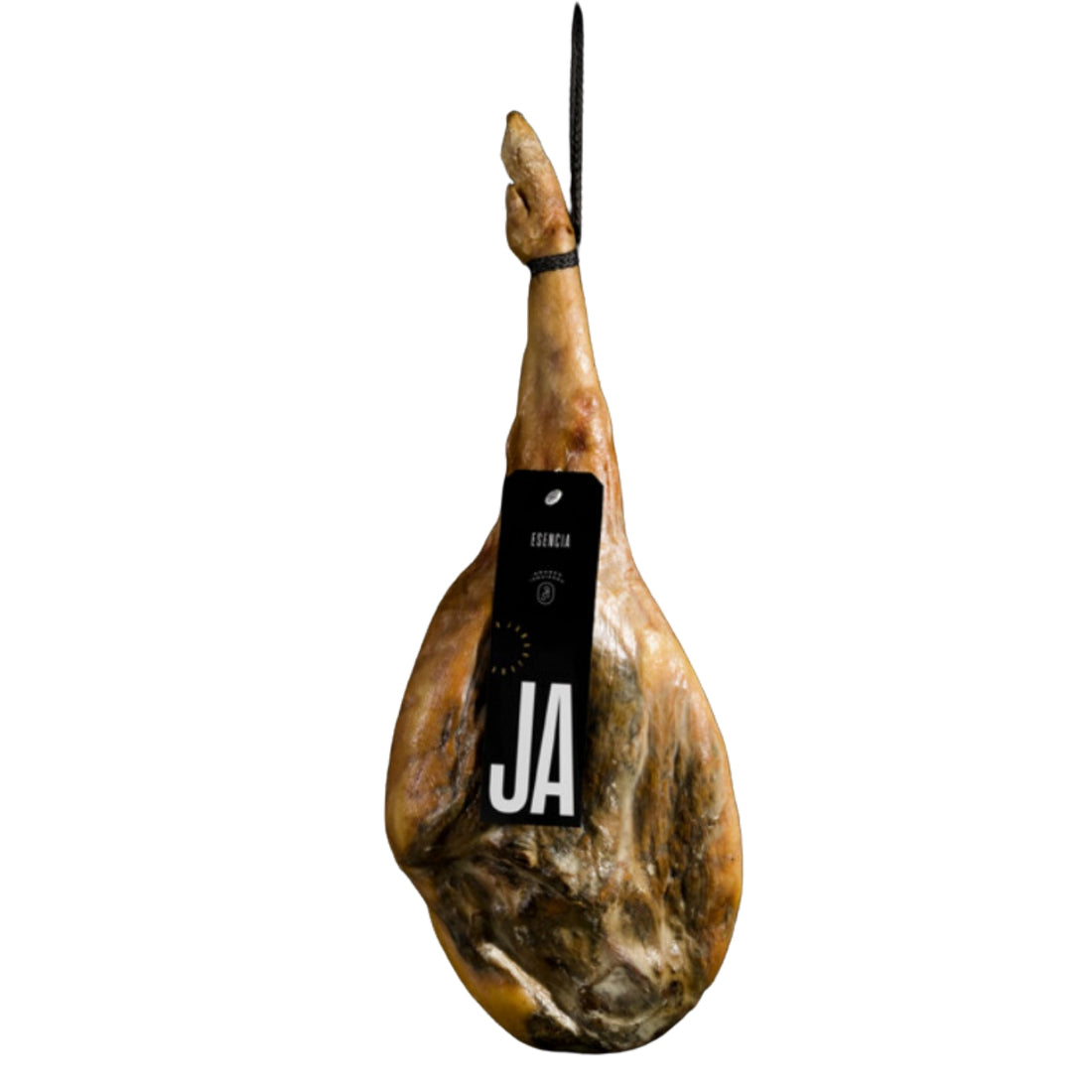
 Spanish ham Jamon Duroc in gift boxVendor:Spanish ham Jamon Duroc in gift boxAndres Izquierdo
Spanish ham Jamon Duroc in gift boxVendor:Spanish ham Jamon Duroc in gift boxAndres Izquierdo- Regular price
-
€129,50 €140,00 - Regular price
-
€141,75 - Sale price
-
€129,50 €140,00
Quick view
Veelgestelde vragen over Spaanse ham
Wat is Spaanse ham en hoe wordt het geproduceerd?
Spaanse ham, ook bekend als "jamón," is een hoogwaardige delicatesse afkomstig uit Spanje. Het wordt traditioneel gemaakt van het vlees van verschillende varkensrassen, waaronder het bekende Iberische varken, maar ook Serrano en Duroc varkens. Elk ras heeft zijn eigen kenmerken en smaakprofiel, wat bijdraagt aan de diversiteit en rijkdom van Spaanse ham.Het productieproces begint met zorgvuldig geselecteerde varkens, die worden gevoed met verschillende diëten. De beroemde Jamon Iberico wordt gekenmerkt door het dieet van eikels (bellota) dat de varkens in de vrije natuur consumeren, terwijl de Jamon Serrano en Jamon Duroc voornamelijk worden gevoed met een combinatie van graan en natuurlijke voeding. Bij de jamon iberico noemen wordt dit cebo de campo & cebo genoemd. Elk dieet draagt bij aan de specifieke smaak en kwaliteit van de ham.Na het zorgvuldig selecteren en voeden van de varkens, ondergaat het vlees een langdurig en nauwgezet rijpingsproces. Het wordt aan de lucht gedroogd in speciale rijpingskelders, waar het zijn kenmerkende smaak, aroma en textuur ontwikkelt. Het vet in het vlees smelt langzaam tijdens de rijping, wat zorgt voor een sappige en smaakvolle ham. Door de jarenlange ervaring en tradities die worden toegepast bij de productie van Spaanse ham, is het een waar culinair kunstwerk dat gewaardeerd wordt door fijnproevers over de hele wereld.
Waarom is Spaanse ham wereldwijd zo populair?
Spaanse ham is wereldwijd populair vanwege zijn unieke en verfijnde smaak, samen met het lange rijpingsproces dat het vlees zijn karakteristieke aroma en textuur geeft. Het ambachtelijke vakmanschap en de traditionele productiemethoden dragen bij aan de hoge kwaliteit en waardering door fijnproevers over de hele wereld.
Hoe lang duurt het rijpingsproces van Spaanse ham en wat is het belang ervan voor de smaak?
Het rijpingsproces van Spaanse ham varieert afhankelijk van het type ham en de gewenste kwaliteit. Over het algemeen duurt het proces enkele maanden tot enkele jaren. Tijdens de rijping ontwikkelt het vlees zijn smaak, aroma en textuur, waarbij het vet in het vlees smelt en zorgt voor een unieke en rijke smaakervaring.
Welke regio's in Spanje staan bekend om de productie van hoogwaardige Spaanse ham?
De meest bekende regio's in Spanje voor de productie van hoogwaardige Spaanse ham zijn Extremadura, Andalusië en Castilië en León. Deze regio's bieden een gunstig klimaat en natuurlijke omgevingen die essentieel zijn voor het fokken en voeden van de Iberische varkens.
Hoe kun je Spaanse ham het beste bewaren en serveren voor de beste smaak?
Spaanse ham moet worden bewaard op een koele, droge plaats, idealiter in een speciale hamhouder om gemakkelijk te kunnen snijden. Het wordt aanbevolen om de ham af te dekken met een doek of vetvrij papier om uitdroging te voorkomen. Om optimaal van de smaak te genieten, dient Spaanse ham op kamertemperatuur te worden geserveerd, zodat de rijke aroma's volledig tot hun recht komen.De gesneden ham bewaar je het beste in de koelkast. Top van ons: haal de ham een half uurtje voor consumeren uit de koelkast en laat deze op kamertemperatuur komen. Zo komen aroma's en smaken beter vrij.
Wat zijn enkele traditionele Spaanse gerechten waarin Spaanse ham een prominente rol speelt?
Spaanse ham is een veelzijdig ingrediënt dat in tal van traditionele gerechten wordt gebruikt. Enkele voorbeelden zijn de beroemde tapa "Jamon Iberico," "Bocadillos" (broodjes) met ham en tomaat, "Huevos Rotos" (gebroken eieren) met ham, en "Paella" met toegevoegde stukjes ham voor extra smaak.








































